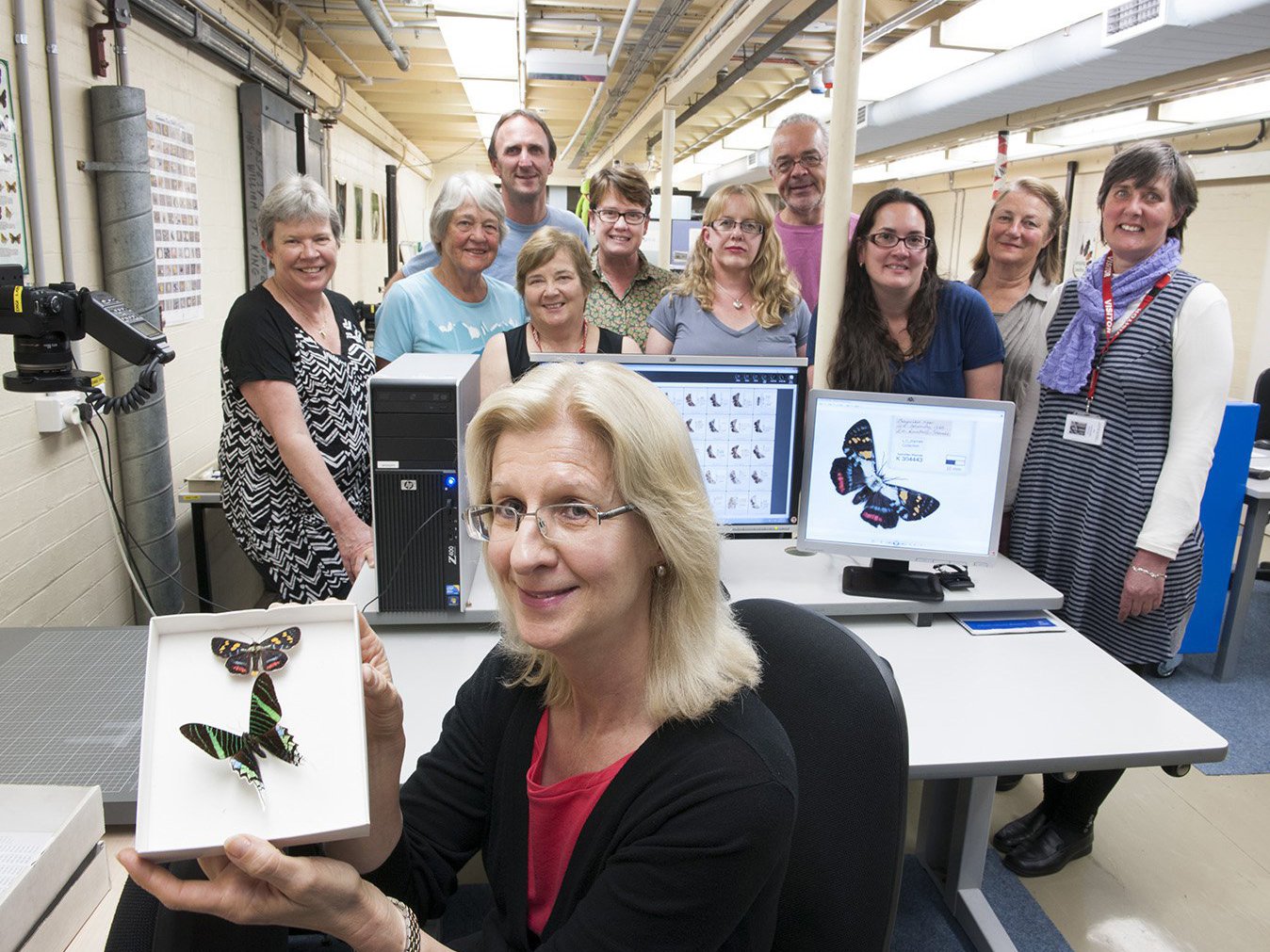
The Australian Museum (AM) is celebrating an impressive milestone of 10 years for the digitisation program, DigiVol, which is now used by 25 international and 48 Australian institutions around the globe. The highly acclaimed program is a pioneer in the field of digitising the collections of museums across the world.
Developed in 2011 by the AM’s Manager of Digital Collections and Citizen Science, Paul Flemons, the AM and the Atlas of Living Australia (ALA) joined forces to create DigiVol – the online platform that brings the AM’s historic collections into the loungerooms and home offices of volunteer citizen scientists around the nation and the world.
DigiVol is now used by more than 25 international institutions, notably the Royal Botanic Gardens – Kew, UK, the New York Botanical Garden, the Smithsonian Institution, Washington D.C., the Natural History Museum, London UK and the Natural History Museum of Utah. The digitisation of all these collections gives scientists fair and open access to use the records for their research, wherever they may be.
Director and CEO, Australian Museum, Kim McKay AO, said museums are natural leaders in the citizen science movement.
“As public institutions, museums have education and engagement at their core. The AM has been engaging volunteers in science for decades, yet the term citizen science has only received broad recognition in recent years, a response to the growing numbers of people looking for ways to contribute meaningfully to science and the issues they care about,” McKay said.
Flemons said that when DigiVol was launched in 2011, it was an experimental foray into the world of crowdsourcing, and that there were online volunteers willing to help natural history collections capture their collection data seemed rather “farfetched”.
“In its 10 years, over 280 DigiVol lab volunteers and citizen scientists have contributed 60,000 hours to create 682,000 digital records. The DigiVol online community have completed more than 8 million transcriptions and contributed more than 140,000 hours in the past two years alone,” Flemons said.
“It was definitely a risk at the time we launched. Crowdsourcing was in its infancy and there were no Museums providing online volunteers with the opportunity to engage in digitising their natural history collections,” Flemons explained.
“Invaluable information is stored within natural history museum specimens and objects, on their labels and in their archival records. Prior to digitisation this information was accessible only to researchers who could visit the collections’ physical location. By creating a digital record of each item, we are giving access to a global audience,” Flemons said.
“At the AM, we are dedicated and passionate about preserving, understanding and protecting our biodiversity. One way to do this is through our collections. The AM has over 21 million objects and specimens representing almost 200 years of collecting,” McKay said.
One of the first international institutions to show interest was The Royal Botanic Gardens, Kew, UK, led by Research Leader, Digital Collections, Sarah Phillips.
“DigiVol has been an important tool in accelerating access to Kew’s collections with over 120,000 specimen records transcribed by the amazing volunteers. The data can be used by everyone to advance global research on the causes of biodiversity loss and to find nature-based solutions for a more sustainable future,” Phillips said.
“The most serious threat to biodiversity is climate change and habitat loss. Discovering and documenting our diverse lands and fauna are crucial first steps to ensuring their survival for future generations,” McKay said.
“We congratulate and thank our dedicated DigiVol volunteers and staff on the remarkable achievements of this globally-recognised project. Their efforts have tangible benefits for our institutions and industry as well as being incorporated into decision-making processes and conservation planning,” McKay added.
Find out how you can get involved by going to www.australian.museum/get-involved/citizen-science



